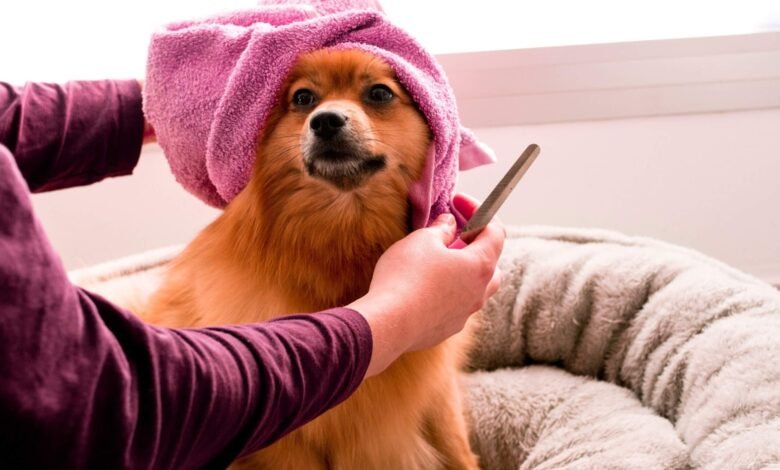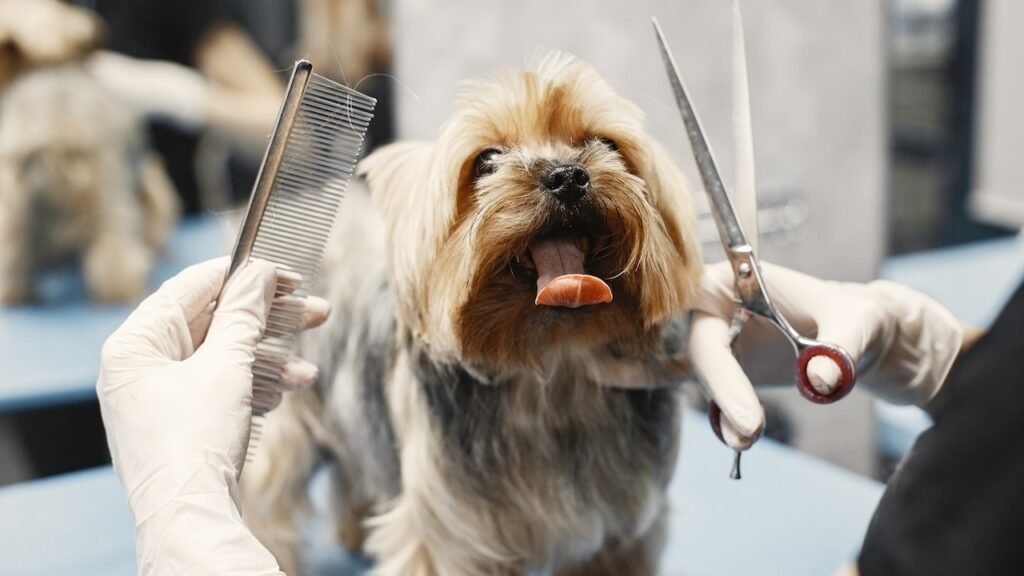
The Importance of Regular Pet Grooming: Maintaining Health and Hygiene
Pet owners often consider their four-legged friends as integral members of their family. It’s not just love and care that pets need; regular grooming is equally vital for their well-being. In this article, we will explore why maintaining the health and hygiene of your pets through regular grooming is of utmost significance.
Read More: 3 Benefits of Regular Pet Grooming
Benefits of Regular Pet Grooming

Improved Appearance
One of the most apparent advantages of regular pet grooming is the enhancement in the appearance of your beloved furry friend. Grooming sessions often include brushing, which serves several purposes. It helps remove dirt, debris, and tangles from your pet’s coat, leaving it looking clean, shiny, and healthy.
Health Benefits
Grooming is not merely about making your pet look good; it also has significant health benefits. During grooming, you have the opportunity to inspect your pet’s skin and coat for any abnormalities. This is particularly important because early detection of issues like rashes, ticks, lumps, or other skin problems can be life-saving. Grooming helps you stay proactive in your pet’s healthcare.
Reduced Shedding
If you’re tired of constantly finding pet hair on your furniture and clothes, regular grooming can provide a solution. Grooming helps to reduce shedding by removing loose and dead hair before it has a chance to fall out and accumulate in your living spaces.
Early Problem Detection
Grooming sessions provide an excellent opportunity to spot potential health problems early. Changes in your pet’s skin condition, the appearance of unusual lumps or bumps, or shifts in their behavior can be indicators of underlying health issues. Regular grooming ensures that you can address these problems promptly, potentially saving your pet from suffering or complications.
Frequency of Grooming
Dogs
The frequency of grooming varies depending on your dog’s breed and coat type. Long-haired breeds often require weekly grooming sessions to keep their coats in good condition, while short-haired dogs can go longer between grooming sessions. Tailoring the grooming schedule to your dog’s specific needs is essential.
Cats
Cats are typically excellent self-groomers. However, regular brushing can aid in preventing hairballs and matting. Brushing your cat a few times a week is usually sufficient to keep their coat healthy and reduce shedding.
Grooming Tools and Supplies
Effective grooming relies on having the right tools and supplies. Essential items include:
- Brushes and Combs: These are used to remove tangles, mats, and loose hair from your pet’s coat.
- Shampoos and Conditioners: Pet-specific products help keep their skin and coat clean and healthy.
- Nail Clippers: Regular nail trims are necessary to prevent overgrowth and discomfort for your pet.
DIY Grooming vs. Professional Grooming

Deciding whether to groom your pet yourself or seek professional help depends on various factors. It’s essential to consider the pros and cons of both options and choose what’s best for your pet and your circumstances.
Special Considerations for Different Pets
Different types of pets have unique grooming needs, and it’s important to cater to their specific requirements.
Dogs
Dogs come in various breeds and sizes, each with its own grooming needs. From brushing and bathing to trimming and nail care, the basics of dog grooming vary depending on your pet’s breed.
Cats
Cats are typically great at grooming themselves, but some may require extra care. Brushing, especially for long-haired cats, can help reduce shedding and prevent matting.
Other Pets
For less common pets like rabbits, guinea pigs, and birds, grooming is equally important. Each type of pet has its unique grooming needs, so it’s important to research and understand how to care for them properly.
Tips for Stress-Free Grooming
Grooming can be a stressful experience for some pets. To make the process as comfortable as possible, consider the following tips:
- Start grooming your pet at a young age to get them accustomed to the process.
- Use treats and positive reinforcement to reward good behavior during grooming.
- Be gentle and patient, and stop if your pet becomes too stressed or agitated.
Common Grooming Mistakes to Avoid

While grooming is essential, it’s equally important to avoid common mistakes that could harm your pet’s health. Some of these include:
- Using human grooming products on pets can be harmful to their skin.
- Cutting nails too short, potentially causing bleeding and pain.
- Not using appropriate tools for your pet’s specific coat type.
Conclusion
Regular pet grooming is not just about keeping your pet looking good; it’s a fundamental aspect of maintaining their health and hygiene. By brushing, bathing, and inspecting your pet regularly, you can help them lead a happy and healthy life.
Read More: 10 Basic Grooming Techniques for Pets
FAQs
How often should I groom my dog? The frequency of grooming depends on your dog’s breed and coat type. Long-haired breeds often require more frequent grooming than short-haired breeds. Consult with your veterinarian or a professional groomer for guidance.
Can I use human shampoo on my pet? It’s not recommended to use human shampoo on pets. Their skin and coat have different pH levels, and using human products can lead to skin irritation and other issues. Use pet-specific shampoos and conditioners.
What if my cat hates being groomed? If your cat dislikes grooming, start with short, positive sessions, and gradually increase the time. Use treats and positive reinforcement to make the experience more pleasant.
Are there any shortcuts to reduce pet shedding? Regular grooming is the most effective way to reduce shedding. Brush your pet regularly to remove loose hair and prevent it from spreading around your home.
What should I do if I find a lump on my pet during grooming? If you discover a lump or any unusual skin condition during grooming, consult with your veterinarian immediately. Early detection of such issues is crucial for your pet’s health.








One Comment